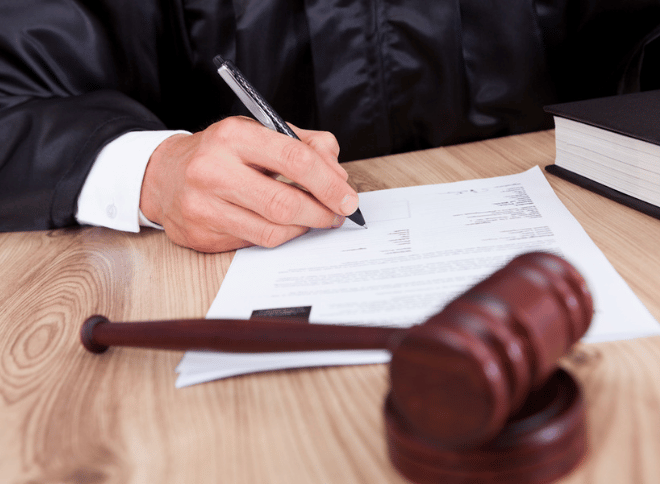Injunctions for protection in Florida can be used in various situations to safeguard people from harm. Knowledge of the processes and what injunctions for protection involve will help you know what to do and expect. In this guide, we will cover what you need to know, including an injunction for protection, the laws surrounding injunctions, how to file one, and the difference between an injunction and a restraining order.
What is an Injunction for Protection?
An injunction for protection is a court order that serves to protect you, as the “petitioner,” from violence when someone (the “respondent”) has been physically violent or placed you in fear of violence. It is administered by civil courts.
The injunction order requires the individual to perform or is restrained from performing a particular act for a period of time, requiring them to stay away from your home, car, place of employment, and other places the court finds necessary. Frequently, language requiring no contact is contained in the injunction, which is different than a criminal “no-contact” order.
Injunctions are temporary or permanent. If a temporary injunction is granted, a hearing for a permanent injunction is scheduled within 15 days. If a permanent injunction is granted, it can last from months to years, depending on the ruling.
If the individual served the injunction violates its parameters, they can face civil or criminal charges. They can face fines and up to a year in jail.
The type of injunction would depend on what has happened and your relationship with the respondent. Injunctions for protection in Florida include:
- Domestic Violence
- Dating Violence
- Repeat Violence
- Sexual Violence
- Stalking
Different Types of Injunctions for Protection
According to the Office Of The State Attorney Sixth Judicial Circuit of Florida, here are the different types of injunctions and their requirements:
Domestic Violence
- Requires the petitioner and respondent to be family or household members who are or were living together in the same single dwelling unit – unless they have a child together.
- Parents of a child in common are not required to have been married or have lived together.
- The petitioner must show that they are a domestic violence victim or reasonably believe they are in immediate danger of becoming a victim.
Dating Violence
- Requires a dating relationship within the past 6 months.
- The relationship must have an expectation of romantic affection, not a casual relationship.
- The petitioner must show that they are a victim of dating violence or have a reasonable fear that they are in immediate danger of becoming a victim.
Repeat Violence
- Requires at least 2 or more incidents of violence or stalking by the respondent on the petitioner or an immediate family member; one must be within the past 6 months.
- The petitioner must fear repeated violence by the respondent.
Sexual Violence
- Requires the charges of sexual battery, a lewd or lascivious act upon or in the presence of a person younger than 16; luring or enticing a child; and sexual performance by a child.
- May protect the petitioner from the respondent who was jailed for sexual violence against the petitioner and whose prison term has expired or is due to expire within 90 days.
Stalking
- Requires at least 2 incidents of stalking or cyberstalking
What Laws You Need to Know
Multiple laws provide a legal framework for protection against violence and the right to injunctions.
Florida Statute 741.30 establishes the cause of action for an injunction for protection against domestic violence. 741.31 makes the violation of a domestic violence injunction a crime. 784.046 establishes the cause of action for a protective injunction by a victim of repeat violence, sexual violence, or dating violence. Additionally, 784.0485(1) establishes a cause of action for an injunction against stalking.
Violations of injunctions can cause the respondent to face civil and/or criminal penalties. A permanent injunction is enforceable in all 50 states across the U.S.
When to Consider Filing For One
When dangerous scenarios are likely to occur in the future, you should consider filing for an injunction for protection in Florida.
For example, suppose you have been the subject of violence (hitting, kicking, throwing, other physical actions) from your husband, moved in with a family member, and continue to receive threats. In that case, an injunction can provide legal protection against future violence.
If you have a boyfriend staying with you and find out he has been sexually abusing your 11-year-old daughter, seriously consider filing for a sexual violence injunction for protection.
If you went on a date with a man, told him you didn’t want to see him anymore, and then he started following or harassing you, showing up at your work, or watching you from the street, and you feel in danger, filing for a stalking injunction could help to stop him and prevent potential violence.
These are a few scenarios of many potential possibilities. If you feel you are in danger due to a history of violence and/or ongoing threats, filing for an injunction should be considered.
How to File an Injunction in Florida: A Step-By-Step Guide
Once it is determined what type of injunction is appropriate, an application – also called a petition- must be filed. It should be as thorough as possible with documentation and evidence.
Once the petition is completed and submitted, the judge will review it and decide.
Gathering Necessary Documents and Evidence
In each type of injunction, gathering and preserving documents and evidence is necessary. Documentation should include a section of what has happened, including details of violent incidents and the dates and locations, as much as possible, including threats and incidents, calls to 911/law enforcement, weapons used, and other details.
Any evidence you may have, such as relevant photos, videos, sound recordings, medical records, and text messages, should also be included. Keep hard copies in a safe, water-proof place and preserve digital evidence by making copies, saving them on an external drive, and/or sending them to a personal or trusted individual’s email.
You may have or be able to gather more evidence than you think. A lawyer can help guide you through the process. You do not have to stay in fear of violence, feeling that you have no legal avenue for protection.
The Filing Process Explained
The petition is filed with the Clerk of Courts in your county. The necessary documents and evidence will be submitted, along with a photo ID of yourself, your signature, the names and ages of children under 18, and directions to where the respondent can be found.
Once the clerk receives the application, they will give it to the judge immediately. The judge will then review the petition and make the decision of whether or not to grant the temporary injunction.
What Happens After Filing
Three things can happen. (1) The judge will grant a temporary injunction of protection, or (2) The judge can enter an Order Setting Hearing Only. (There is no injunction until the hearing) or (3) The judge can deny the petition, giving reasons why it was denied. </p
In (1) and (2) – the respondent will be served with a copy of the judge’s order. A final hearing will be set within 15 days if a temporary injunction is granted. The petitioner must attend the final hearing, where evidence is presented, any witnesses will testify, and financial information is provided.
When petitions are granted, you have legal protection against the dangerous party. If there is a final injunction granted, the other party will have their ability to purchase and possess weapons and ammunition affected; they may have to leave a shared residence, complete a Certified Batterers’ Intervention Program, pay financial support, and have limited time with minor children, among other consequences.
Injunction vs. Restraining Order in Florida: Key Differences and Similarities
Injunctions and restraining orders in Florida are often used interchangeably, but they are key differences.
Understanding a Restraining Order
A restraining order has the same function as an injunction – to provide protection. However, a restraining order is granted on a short-term basis. If the judge determines it should be granted, it is generally approved on the same day. Reasons can include domestic abuse, stalking, harassment, employment disputes, and copyright infringement.
The restraining order is called ex parte because the judge has only heard one side of the situation. It only lasts until the court hearing.
How is an Injunction Different from a Restraining Order in Florida?
An injunction can be temporary or permanent. A restraining order will only be temporary. When the court hearing occurs within 15 days, the judge will decide if a permanent injunction will be granted.
Similarities Between an Injunction and a Restraining Order
Respondents must abide by injunctions and restraining orders. The conditions are typically similar, such as no communication and limits on where they can go. If they violate either, the respondent can face fines and criminal charges, including jail time.
When To Seek Legal Help
Reaching out to a law firm experienced with injunctions for protection in Florida can offer necessary assistance. An experienced criminal defense lawyer in Clearwater understands what it takes to submit a strong petition, including how to gather and present the evidence needed for both temporary and permanent injunctions.
If you or your children are in danger, you have the right to and deserve to be legally protected from violence.
Dean Tsourakis has experience with injunctions for protection. Contact us today to schedule a free consultation.
on Aug 8, 2023



